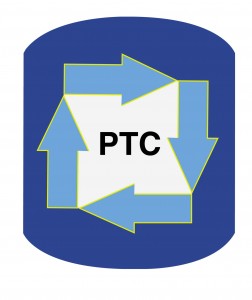Yoel Sasson may be the most prolific contributor in the history of phase-transfer catalysis to the advancement of academic PTC reactions and mechanistic papers in an extremely diverse range of applications. One of his fascinating papers (Ind. Eng. Chem. Res. 2007, 46, 3016-3023) describes the use of potassium phosphate for the PTC C-alkylation of diethyl malonate, PTC oxidation of fluorene and PTC isomerization of allylbenzene. As an aside, Dr. Sasson, Dr. Rabinovitz and I published together the first comprehensive kinetic study of a PTC-NaOH reaction which was the isomerization of allylbenzene. My very first publication was the PTC deuteration of fluorene (from lab work that I performed as a second year undergraduate in the summer 1976 with Dr. Itamar Wilner, a graduate student at that time).
In this paper, Dr. Sasson and his associates studied in great detail the reaction of diethyl malonate with dibromoethane to form the cyclopropyl ring shown in the diagram. They examined the effect of different bases, phase-transfer catalysts, solvents, hydration levels (thermal pretreatment of K3PO4), particle size, and temperature to determine energy of activation.
When performing the PTC C-alkylation using potassium phosphate as the base and toluene as the solvent at 70 deg C for 8 hours with 5 mole% phase-transfer catalyst, the expensive 18-crown-6 gave higher conversion (73%) than classical less expensive phase-transfer catalysts such as tetrabutylammonium bromide (63%), cetyl trimethylammonium bromide (60%) and PEG-600 (56%). Under these conditions, no PTC gave 8% conversion.
Obviously, the closed ring crown ether bound well to the K+ cation of the potassium phosphate to enhance the reaction in toluene. The open chain polyethylene glycol catalyzed the reaction but not as effectively.
When the solvent was dimethylacetamide, the conversion was 94% in 4 hours. DMSO showed an initial rate higher by an order of magnitude higher than in DMA.
An extremely interesting result was that when heating using microwave irradiation, potassium phosphate outperformed potassium t-butoxide!
As is almost always the case in solid-liquid PTC reactions, hydration levels are crucial to reaction rate. When using DMA as the solvent, 5 mole% 18-crown-6 as the phase-transfer catalyst at 70 deg C and 4 hours reaction time, 96% conversion was observed with traces of water in the K3PO4, 85% conversion at 2 weight% water, 74% conversion at 5 weight% water, 62% conversion at 10 weight% water and 40% conversion at 20 weight% water in the potassium phosphate.
This excellent article is a must-read if you want to consider using potassium phosphate as a base in PTC applications.
If you need to achieve low-cost high-performance green chemistry for strong base reactions, now contact Marc Halpern of PTC Organics who started publishing a 15-part series entitled “Hydroxide Ion Initiated Reactions Using Phase-Transfer Catalysis: Mode of Action and Applications” in the 1970’s and has been practicing strong base PTC ever since.


